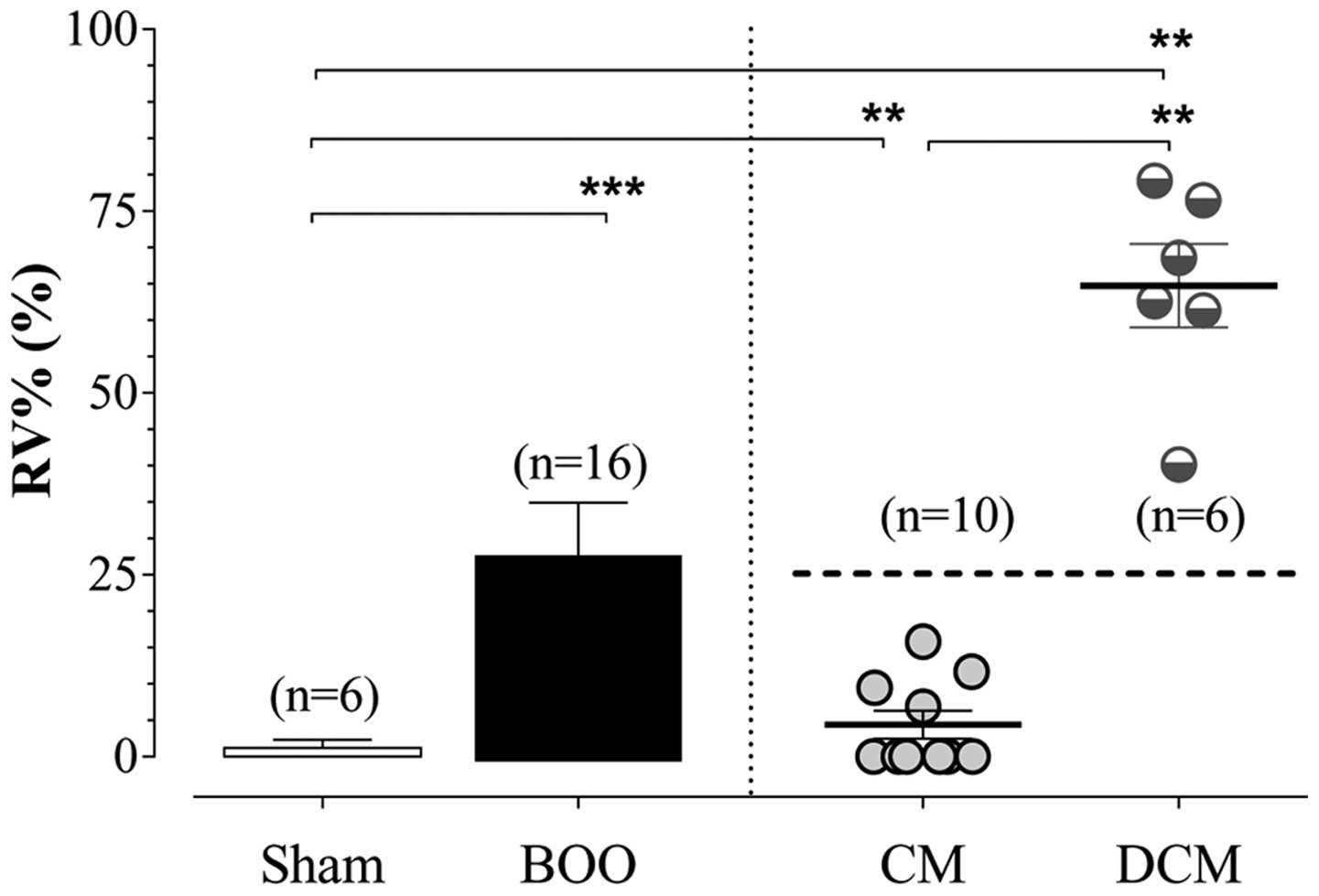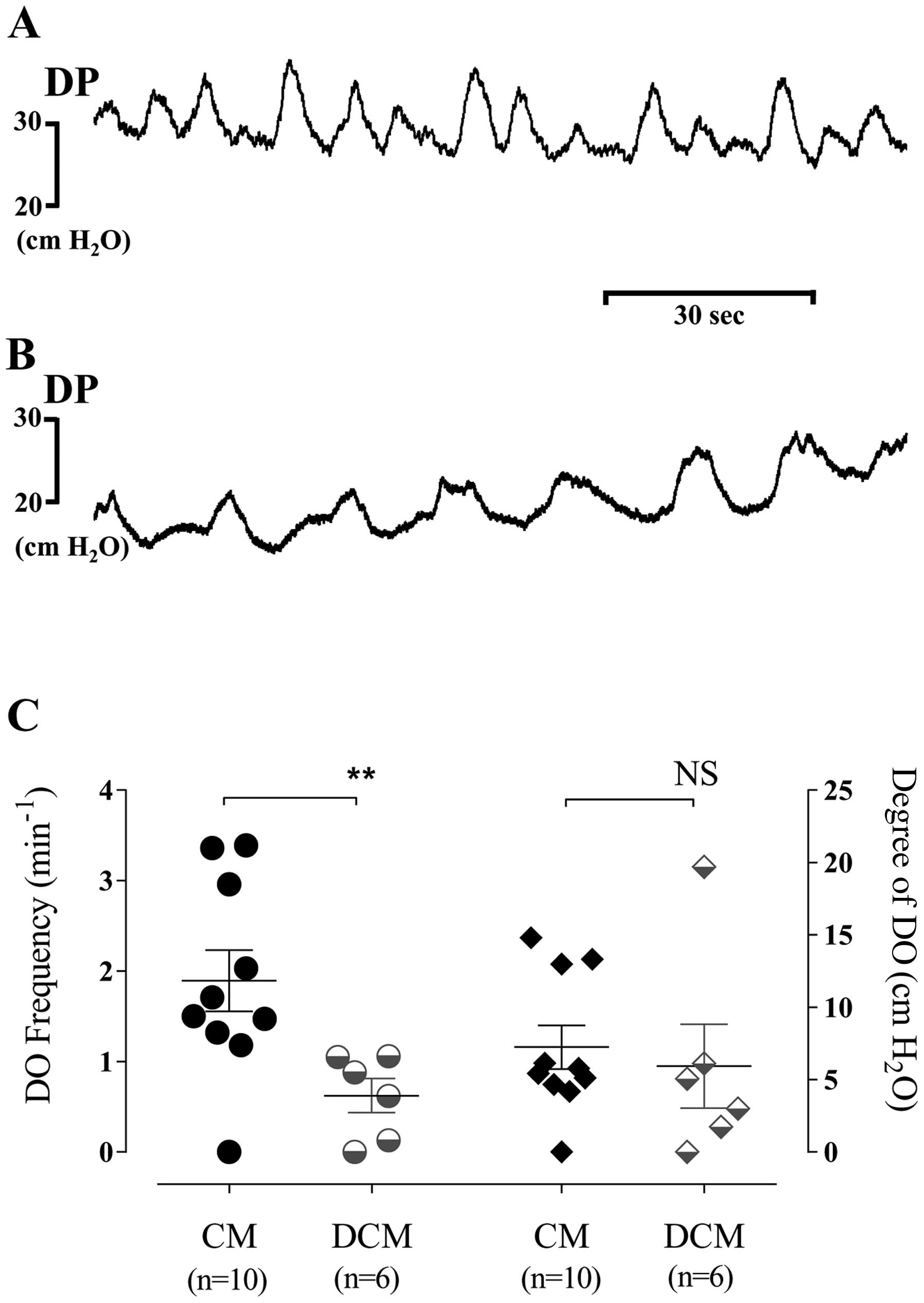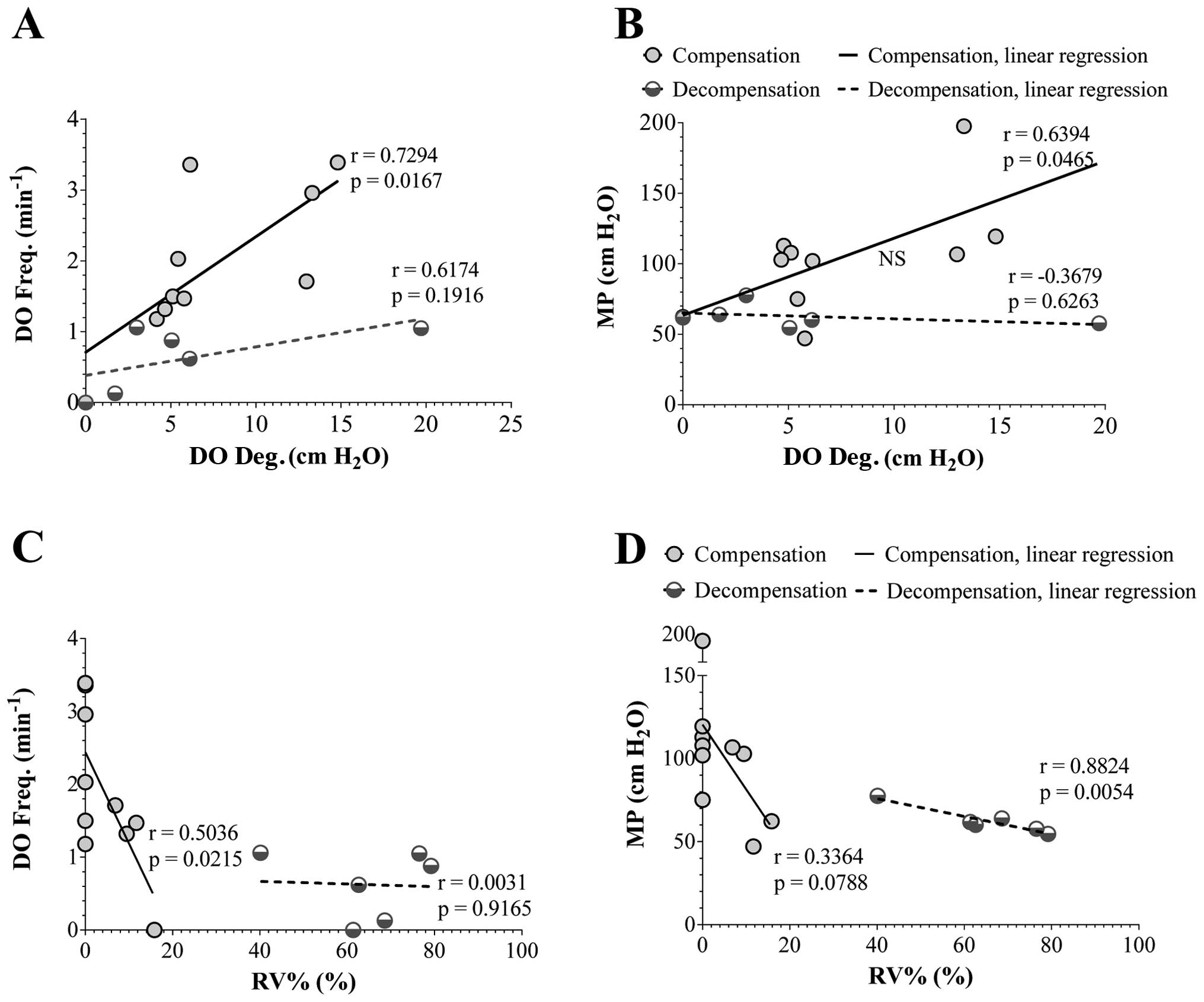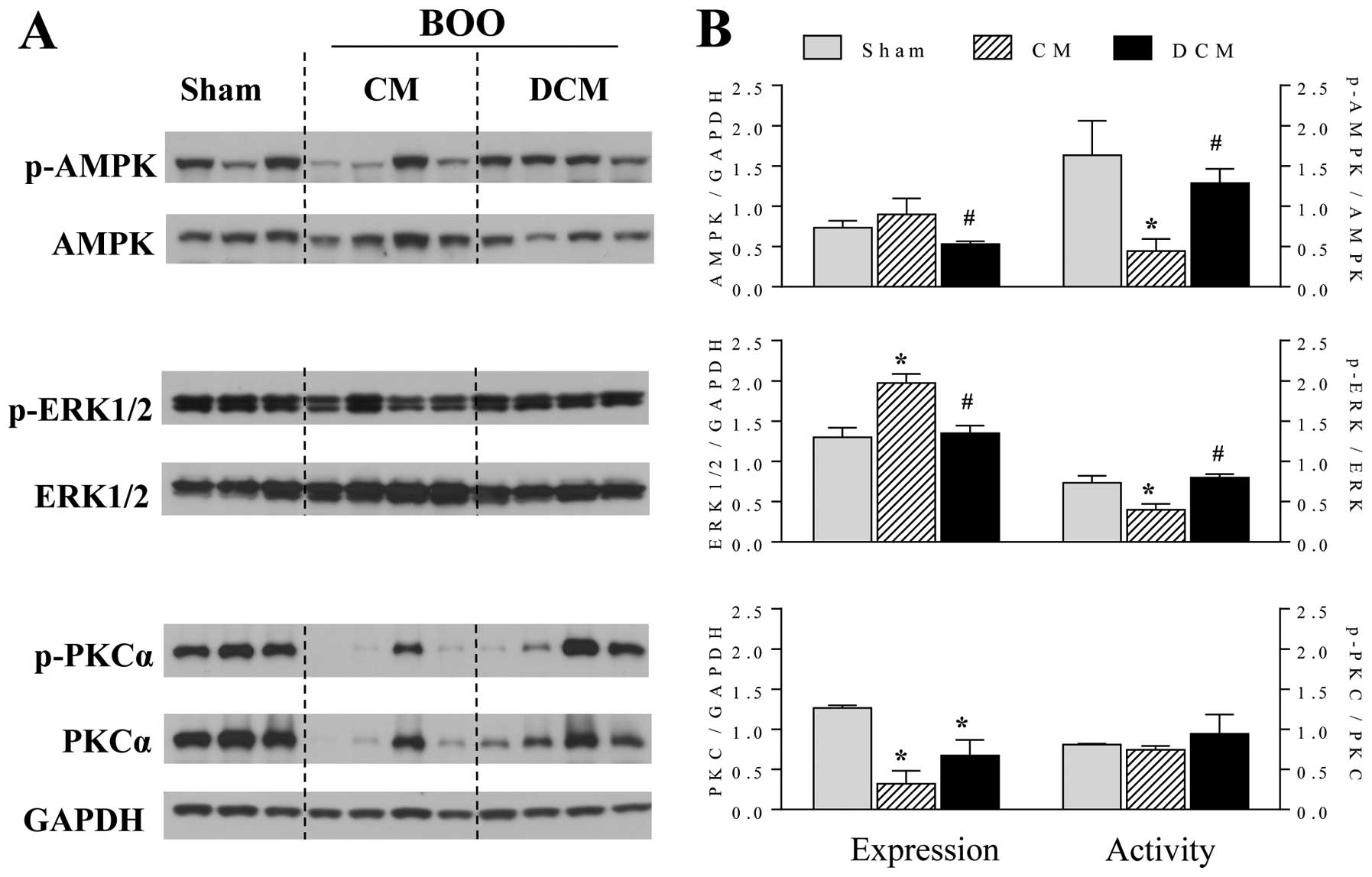|
1
|
Roehrborn CG: BPH progression: concept and
key learning from MTOPS, ALTESS, COMBAT, and ALF-ONE. BJU Int.
101(Suppl 3): S17–S21. 2008. View Article : Google Scholar : PubMed/NCBI
|
|
2
|
Levin RM, Haugaard N, O’Connor L, Buttyan
R, Das A, Dixon JS and Gosling JA: Obstructive response of human
bladder to BPH vs. rabbit bladder response to partial outlet
obstruction: a direct comparison. Neurourol Urodyn. 19:609–629.
2009. View Article : Google Scholar : PubMed/NCBI
|
|
3
|
Levin RM, Levin SS, Zhao Y and Buttyan R:
Cellular and molecular aspects of bladder hypertrophy. Eur Urol.
32(Suppl 1): S15–S21. 1997.
|
|
4
|
Levin RM, Longhurst PA, Monson FC, Kato K
and Wein AJ: Effect of bladder outlet obstruction on the
morphology, physiology, and pharmacology of the bladder. Prostate
Suppl. 3:9–26. 1990. View Article : Google Scholar : PubMed/NCBI
|
|
5
|
Levin RM, Monson FC, Haugaard N, Buttyan
R, Hudson A, Roelofs M, Sartore S and Wein AJ: Genetic and cellular
characteristics of bladder outlet obstruction. Urol Clin North Am.
22:263–283. 1995.PubMed/NCBI
|
|
6
|
O’Connor LT Jr, Vaughan ED Jr and Felsen
D: In vivo cystometric evaluation of progressive bladder outlet
obstruction in rats. J Urol. 158:631–635. 1997.PubMed/NCBI
|
|
7
|
Kang YJ, Jin LH, Park CS, Shin HY, Yoon SM
and Lee T: Early sequential changes in bladder function after
partial bladder outlet obstruction in awake sprague-dawley rats:
focus on the decompensated bladder. Korean J Urol. 52:835–841.
2011. View Article : Google Scholar
|
|
8
|
Andersson KE and Arner A: Urinary bladder
contraction and relaxation: physiology and pathophysiology. Physiol
Rev. 84:935–986. 2004. View Article : Google Scholar : PubMed/NCBI
|
|
9
|
Yoon JY, Zderic SA, Duckett JW and Levin
RM: Effect of partial outlet obstruction on the biphasic response
to field stimulation at different concentrations of calcium.
Pharmacology. 49:167–172. 1994. View Article : Google Scholar
|
|
10
|
Chien CT, Yu HJ, Lin TB and Chen CF:
Neural mechanisms of impaired micturition reflex in rats with acute
partial bladder outlet obstruction. Neuroscience. 96:221–230. 2000.
View Article : Google Scholar : PubMed/NCBI
|
|
11
|
Schröder A, Chichester P, Kogan BA,
Longhurst PA, Lieb J, Das AK and Levin RM: Effect of chronic
bladder outlet obstruction on blood flow of the rabbit bladder. J
Urol. 165:640–646. 2001.PubMed/NCBI
|
|
12
|
Lin AT, Chen MT, Yang CH and Chang LS:
Blood flow of the urinary bladder: effects of outlet obstruction
and correlation with bioenergetic metabolism. Neurourol Urodyn.
14:285–292. 1995. View Article : Google Scholar : PubMed/NCBI
|
|
13
|
Dyck JR and Lopaschuk GD: AMPK alterations
in cardiac physiology and pathology: enemy or ally? J Physiol.
574:95–112. 2006. View Article : Google Scholar : PubMed/NCBI
|
|
14
|
Dolinsky VW and Dyck JR: Role of
AMP-activated protein kinase in healthy and diseased hearts. Am J
Physiol Heart Circ Physiol. 291:H2557–H2569. 2006. View Article : Google Scholar : PubMed/NCBI
|
|
15
|
Zheng QY, Jin FS, Yao C, Zhang T, Zhang GH
and Ai X: Ursolic acid-induced AMP-activated protein kinase (AMPK)
activation contributes to growth inhibition and apoptosis in human
bladder cancer T24 cells. Biochem Biophys Res Commun. 419:741–747.
2012. View Article : Google Scholar : PubMed/NCBI
|
|
16
|
Aitken KJ, Block G, Lorenzo A, Herz D,
Sabha N, Dessouki O, Fung F, Szybowska M, Craig L and Bägli DJ:
Mechanotransduction of extracellular signal-regulated kinases 1 and
2 mitogen-activated protein kinase activity in smooth muscle is
dependent on the extracellular matrix and regulated by matrix
metalloproteinases. Am J Pathol. 169:459–470. 2006. View Article : Google Scholar
|
|
17
|
Persson K, Sando JJ, Tuttle JB and Steers
WD: Protein kinase C in cyclic stretch-induced nerve growth factor
production by urinary tract smooth muscle cells. Am J Physiol.
269:C1018–C1024. 1995.PubMed/NCBI
|
|
18
|
Mirone V, Imbimbo C, Longo N and Fusco F:
The detrusor muscle: an innocent victim of bladder outlet
obstruction. Eur Urol. 51:57–66. 2007. View Article : Google Scholar : PubMed/NCBI
|
|
19
|
Shibata R, Ouchi N, Ito M, Kihara S,
Shiojima I, Pimentel DR, Kumada M, Sato K, Schiekofer S, Ohashi K,
Funahashi T, Colucci WS and Walsh K: Adiponectin-mediated
modulation of hypertrophic signals in the heart. Nat Med.
10:1384–1389. 2004. View
Article : Google Scholar : PubMed/NCBI
|
|
20
|
Nishino Y, Miura T, Miki T, Sakamoto J,
Nakamura Y, Ikeda Y, Kobayashi H and Shimamoto K: Ischemic
preconditioning activates AMPK in a PKC-dependent manner and
induces GLUT4 up-regulation in the late phase of cardioprotection.
Cardiovasc Res. 61:610–619. 2004. View Article : Google Scholar : PubMed/NCBI
|
|
21
|
Lee T, Andersson KE, Streng T and Hedlund
P: Simultaneous registration of intraabdominal and intravesical
pressures during cystometry in conscious rats - effects of bladder
outlet obstruction and intravesical PGE2. Neurourol Urodyn.
27:88–95. 2008. View Article : Google Scholar
|
|
22
|
Jin LH, Lee HJ, Shin HY, Choi BH, Yoon SM,
Park CS and Lee T: Development and changes with age of detrusor
overactivity in spontaneous hypertensive rats as observed by
simultaneous registrations of intravesical and intraabdominal
pressures. Int Neurourol J. 15:192–198. 2011. View Article : Google Scholar : PubMed/NCBI
|
|
23
|
Kato K, Monson FC, Longhurst PA, Wein AJ,
Haugaard N and Levin RM: The functional effects of long-term outlet
obstruction on the rabbit urinary bladder. J Urol. 143:600–606.
1990.PubMed/NCBI
|
|
24
|
Levin RM, Haugaard N, Hypolite JA, Wein AJ
and Buttyan R: Metabolic factors influencing lower urinary tract
function. Exp Physiol. 84:171–194. 1999. View Article : Google Scholar : PubMed/NCBI
|
|
25
|
McNeill SA, Hargreave TB,
Geffriaud-Ricouard C, Santoni J and Roehrborn CG: Postvoid residual
urine in patients with lower urinary tract symptoms suggestive of
benign prostatic hyperplasia: pooled analysis of eleven controlled
studies with alfuzosin. Urology. 57:459–465. 2001. View Article : Google Scholar
|
|
26
|
Hypolite JA, Longhurst PA, Haugaard N and
Levin RM: Effect of partial outlet obstruction on 14C-adenine
incorporation in the rabbit urinary bladder. Neurourol Urodyn.
16:201–208. 1997. View Article : Google Scholar : PubMed/NCBI
|
|
27
|
Chang S, Hypolite JA, Mohanan S, Zderic
SA, Wein AJ and Chacko S: Alteration of the PKC-mediated signaling
pathway for smooth muscle contraction in obstruction-induced
hypertrophy of the urinary bladder. Lab Invest. 89:823–832. 2009.
View Article : Google Scholar : PubMed/NCBI
|













